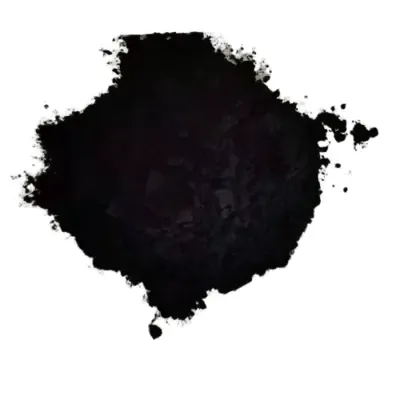
Powdered activated carbon is a material widely used in water treatment, air purification, chemical industry and other fields. Known for its excellent adsorption properties and surface activity, it can effectively remove harmful substances in water and air. So, how does powdered activated charcoal work? Let's dig a little deeper.

1. Preparation of Activated Carbon
Powdered activated carbon is prepared by high temperature carbonization and activation treatment. First, natural materials such as wood, coconut shell, coal, etc. are heated to a high temperature to make them lose most of their non-carbon components and obtain carbonized products. The charred product then reacts with gases or chemicals at high temperatures to further form a porous structure and increase its surface area. These tiny pores and high surface area are the basis for the outstanding performance of powdered activated carbon.
2. Adsorption principle
What makes powdered activated carbon unique is its extremely large surface area. While a small piece of powdered activated charcoal may look unremarkable, if you spread it out, its surface area can be quite astonishing. This is because the porous structure of activated carbon makes the surface area greatly increased, so there are more adsorption sites.
The adsorption of activated carbon is a physical adsorption process, also known as van der Waals adsorption. During the adsorption process, harmful substance molecules interact with the adsorption sites on the surface of activated carbon, and they are left on the surface of activated carbon due to the van der Waals force between molecules. This means that activated carbon is able to trap and immobilize impurities in gases, liquids or solutions, thereby purifying the medium.
3. Field of application
Powdered activated carbon plays an important role in various fields:
1).Water treatment: In the field of water treatment, powdered activated carbon is widely used to remove organic matter, pigments, odors and toxins in water. For example, in drinking water treatment, powdered activated carbon can effectively remove chlorophyll, oxalic acid and chlorinated organic matter, etc.
2). Air purification: Powdered activated carbon is used in air purification equipment to remove harmful gases such as formaldehyde, benzene, and ammonia in the air to improve indoor air quality.
3). Medicine and food industry: Powdered activated carbon is also used in medicine purification, food decolorization and deodorization, helping to remove impurities in medicine and bad smell in food.
4).Environmental protection application: In the chemical industry, powdered activated carbon is used to purify waste water and waste gas, and reduce environmental pollution.
4. Precautions
Although powdered activated carbon works exceptionally well in the adsorption process, there are a few things to keep in mind:
1).Saturation and regeneration: As time goes by, the adsorption sites of activated carbon will gradually be occupied. Once activated carbon is saturated, it needs to be regenerated or replaced. Regeneration is usually achieved by high temperature desorption or steam treatment.
2). Choose the right type: Different types of powdered activated carbon are suitable for different applications. Selection of the proper activated carbon type and particle size is critical to achieve optimal adsorption.
In conclusion, powdered activated carbon plays an important role in water treatment, air purification, chemical industry and other fields due to its excellent adsorption performance and porous structure. By utilizing its high surface area and adsorption capacity, powdered activated carbon effectively removes harmful substances in the medium and promotes the purification and protection of the environment.